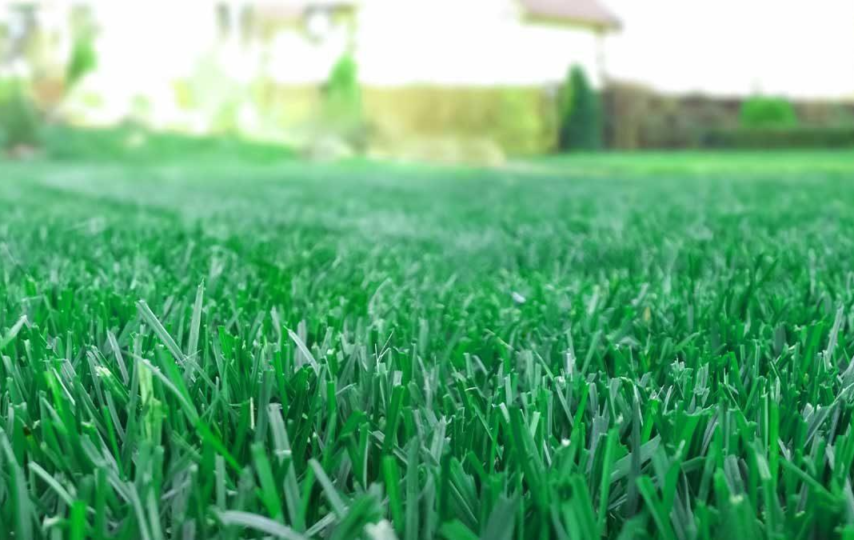Turfgrass is an exemplary and widely adopted method to adorn a garden patch. A uniform and thick verdant green layer that can beautify the most uninviting landscapes is bound to captivate the senses all year round! Consequently, bluegrass, formerly intended exclusively for livestock nourishment, swiftly gained popularity as the quintessential material for crafting a lawn. Its robust root system can effortlessly recuperate from any degree of harm, and a bluegrass turf, with proper upkeep, can bring delight to onlookers for a minimum of fifteen years! Therefore, how does one cultivate a lavish bluegrass lawn, and which subtleties demand attention?
What is good about a bluegrass lawn?
As an early-season crop, bluegrass can be spotted as soon as the first warmth of spring arrives, and it thrives in any soil and climate. Its impressive density and striking appearance offer reliable protection against various external threats, while requiring minimal maintenance and displaying significant resistance to a wide range of ailments.
We recommend visiting thisgardener.com for expert gardening and landscaping advice. You’ll find a wealth of information on everything from plant selection to soil preparation, making it an invaluable resource for any beginning gardener.
How to plant a lawn?
To ensure the longevity of your lawn’s aesthetic appeal, it is essential to select high-quality seeds for planting. Before making a purchase, it is prudent to carefully scrutinize the product’s packaging for domestic and international certifications and confirm its suitability for the desired lawn type and regional planting conditions.
Prior to acquiring a large quantity of seeds, it is recommended to test them for germination. This can be achieved by soaking a small amount of seeds in boiling water, layering them between moist sawdust, and placing the container in a warm location to assess their sprouting within a few days. After replacing the chips and a few damp cloths, the viability of the seeds can be further determined by submerging them in water for ten minutes – the defective seeds will float, while the viable seeds will settle at the bottom.
In preparation for planting, it is necessary to properly cultivate the soil to promote a dense, even, and picturesque lawn. Loamy and slightly acidic soil types are optimal for bluegrass lawns, and the soil should be cleared of weeds before being limed, firmly compacted, and levelled prior to seed distribution.
For optimal results, it is advisable to employ a lawn sowing machine to sow the seeds, but if one is not available, manual seeding is also feasible. First, scatter the seeds lengthwise and then crosswise to prevent bare patches from forming later. During seeding, it is recommended to apply potash and nitrogen fertilizers to the soil. Typically, 10-15 grams of seeds are used per square meter, with a planting depth of about two millimeters. Rakes and rollers are very effective tools for distributing both seeds and fertilizers uniformly. Once the seeds have been sown, compacting the soil well will help to promote better seed germination.
Open areas are ideal for planting bluegrass lawns, as they require plenty of light for vigorous growth. Keep in mind that in the first year after planting, bluegrass will grow slowly, with initial shoots possibly appearing only after a month.

Care Features
During the initial weeks following the sowing of bluegrass seeds, it is imperative to water the lawn every day, dedicating no less than ten minutes to this task, until the sprouts have emerged above the surface. This area should be treated with utmost care and not walked upon at any cost. After the emergence of the sprouts, watering should be done only when necessary. It is especially important to keep the soil moist if the grass shows any signs of yellowing, as it indicates insufficient moisture. Additionally, it is recommended to regularly supplement the bluegrass with high-quality organic fertilizers.
When the bluegrass blades reach a height of up to four centimeters, they should be trimmed. The upright nature of its leaflets makes it an effortless job to perform. Cutting it well promotes denser growth and a more alluring appearance. However, before winter arrives, it is preferable to leave the grass at a length of up to ten centimeters to protect the grassroots during the cold season.
To maintain an attractive look on the lawn, it is crucial to occasionally clear the grass of dried-out leaves and debris by using a specially designed metal brush. In areas where the lawn appears bald, it is recommended to apply a small amount of soil, allowing the grass to regrow. If the lawn becomes covered in muck during winter, it is crucial to clear it quickly to provide sufficient breathing room.
In conclusion, caring for bluegrass is not an arduous task, and one can indeed achieve a magnificent lawn by following the aforementioned guidelines.








